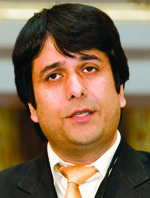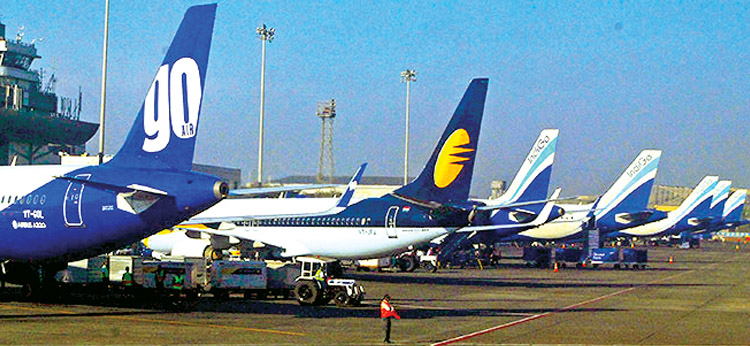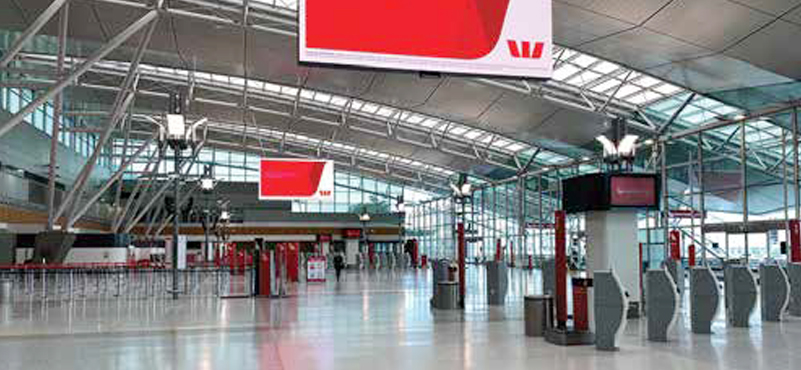While the latest outlook on the business environment in the aviation sector in 2016-17 released recently by noted think-tank CAPA paints a rosy picture in the near run on those usual growth parameters, it also aptly highlights the challenges which can’t be overlooked. Challenges which entail airline companies to fine-tune their operations to keep their costs in check to ensure that their bottomlines stay in the fine-fettle during the course of the next fiscal.

CAPA’S CHIEF EXECUTIVE
(SOUTH ASIA)
First the good news. According to CAPA, the surge in passenger growth would continue unabated in 2016-17, something which has been the most defining trend in the Indian aviation space in the last one and half years ever since the oil prices began to nosedive. In 2014, the price of Benchmark crude had fallen by over 45 percent and registered a further drop of around 35 percent in 2015. In concrete India specific terms, there has been a staggering reduction of 50 percent in ATF prices between August 2014 to now. “We expect the total passenger volume to further grow in 20 percent plus trajectory in the next fiscal and could well reach to 100 million by 2016-17 end. In the international segment, we expect passenger growth to the tune of 10 percent. It could even go higher 12-14 percent, subject to clearance of new bilateral rights and abolition of 5/20 rules,” said Kapil Kaul, Capa’s chief executive (South Asia) while making his presentation at the agency’s annual summit in Mumbai early this month. India’s domestic carriers ferried 81.09 million passengers in calendar year 2015 – a growth of around 21 percent over the previous year number.
CAPA’s latest report also bore positive tidings on the financial performance front. The losses of the airlines in India in 2015-16 are going to be significantly lower than what was earlier anticipated. “We expect the losses of Indian carriers to come down to $250-300 million in 2015-16 as against $1.3 billion at the end of 2014-15. This marks a significant drop of 75 percent in the cumulative losses of the Indian carriers,” Kaul underlined. CAPA is expecting national carrier Air India to post an operating profit even as its net loss would be in the range of $600 million which would be lowest in the recent years. Other airlines too have fared well in the last one year. “Spice Jet has shown a dramatic turnaround. It is likely to have a profit of $45-50 million on its balance sheet at the end of 2015-16 as against a loss of $107 million in the previous fiscal. Indigo had a successful stock market enlisting and is slated to record profits in the range of $275-300 million. Go Air too will end the year with a record profit number to the tune of $20-25 million,” he added.
With the cushion of low oil prices, airlines in India are expected to do well in the 2016-17 fiscal but CAPA has cautioned them to tackle some serious challenges to ensure that a major cost spike, mostly in the non-fuel segment, does not creep into their operational structure. According to the aviation think-tank, recent trends show a modest growth in the Cost of Available Seat Kilometer (CASK) and this will have to be checked by the airlines to have more improved bottomlines in 2016-17. “Due to these challenges, we expct pressure on yields to be over 5 percent which may possibly impact airlines’ profitability,” warned Kaul.
There are also serious issues on the capacity front. “Capacity constraints are clearly visible which continue to challenge growth. Airlines occupancy at above 90 percent especially after Q3 is signalling a serious constraint on this front,” Kaul pointed out. In 2015-16, the capacity increase in the domestic market was to the tune of 10.12 percent while on the international side it was 6.16 percent. However, during the course of 2016-17, CAPA anticipates major capacity addition in the domestic circuit – to the tune of over 50 aircrafts. “We are expecting a significant capacity expansion during the next fiscal. As per our estimates, 50-60 aircrafts would be inducted subject to the fact that A 320 Neo deliveries meet their schedule. Indigo and Go Air will lead this capacity addition drive with induction of almost 30 aircrafts between them,” stated Kaul.
Indian airlines to raise $1.4 billion in 2016-17
CAPA’s latest analysis has also covered the possible additional funding which the Indian carriers may need in the next fiscal to keep their operations in a good shape and also pursue their expansion plans and on this parameter too, there could be a modest increase as compared to the previous year’s figure. According to the agency, the aviation industry has raised about $1.2 billion in the form of equity and debt during the course of 2015-16 and this figure is likely to jump up to $1.4 billion in 2016-17. “For Indian carriers, 2016-17 would be a significant year of funding,” said Kapil Kaul.
According to CAPA analysis, after the spectacular success of Indigo IPO last year, Go Air is also expected to take this route in the next fiscal. Jet Airways is expected to raise $300-400 million debt from its equity partner Etihad Airways. And the state-run Air India would raise close to $700 million by way of debt and the new entrants in the Indian sky Air Asia India and Vistara too would see further recapitalization.
SpiceJet, which has emerged as the most admirable turnaround story in the recent past, will also need additional capital infusion now that the airline has been diverted from the disaster route, has profits on its balance sheet and is expected to place bulk order considering its future plans. “ We expect some significant funding in SpiceJet in the coming financial year,” Kaul pointed out. Incidentally, Ajay Singh, the promoter of SpiceJet was also present on the occasion and he confirmed that the airline is looking for some serious funding in the near run. “We have positive cash flows. But for our future plans, we will need fresh capital infusion. We have plenty of options available and we will take a call on it soon,” he said without divulging the possible quantum of funds which the carrier will need to raise.
Critical steps expected in airport management and development
CAPA’s report also talk at length on the recent trends in the airport management and development – a segment where the larger perception veers round to the view that the government has not shown much urgency in the recent past. CAPA report also underlines those concerns though it is hopeful that some critical steps would be set afoot in the near run.
According to CAPA report, the current fiscal has seen a tremendous growth in domestic passenger volume at major metro airports – 25 percent at Chennai, about 20 percent at Bangalore and Hyderabad, and 12 percent at Delhi and Mumbai. The growth in international passenger volume at Indian hubs has been in a robust trajectory too – 16 percent at Chennai, 11 percent at Bangalore and Hyderabad and 7-10 percent at Mumbai and Delhi. Within the domestic circuit, about 10 airports operated by AAI have registered more than 15 percent growth. These include – Bagdogra, Gaya, Varanasi, Dibrugarh, Dehradun, Leh and Goa. As a result of this surge in the passenger volume, the airport management companies like their airline counterparts, are also witnessing a profitable spell. For instance, AAI is expected to book a profit of $275 million in 2015-16, a marked improvement over the previous fiscal figure of $246 million. And in the first half of the current fiscal, the expected profits of private airport operators GMR and GVK are estimated to be in the range of $33 million and $25 million respectively.
However, the agency has issued a cautionary note saying that some of the critical hubs will soon reach to the saturation point if regulatory provisions to expedite airport infrastructure development are not brought in place. “Mumbai and Chennai airports are likely to start reaching to their capacity thresholds soon, there will also be capacity challenge at Delhi. Considering the passenger volume growth, peak hour congestion at Indian airports is slated to become more visible in the next fiscal,” Kaul maintained. And considering the challenging environment, the agency expects some critical steps to be set afoot in the near run. “We expect Navi Mumbai and Goa projects would move ahead. There could also be a final decision on the second airport in Delhi/NCR region. The 150 km restriction for new airports will also go and there would be regulatory clarity inclined towards hybrid till in airport management,” underlined Kaul.




































